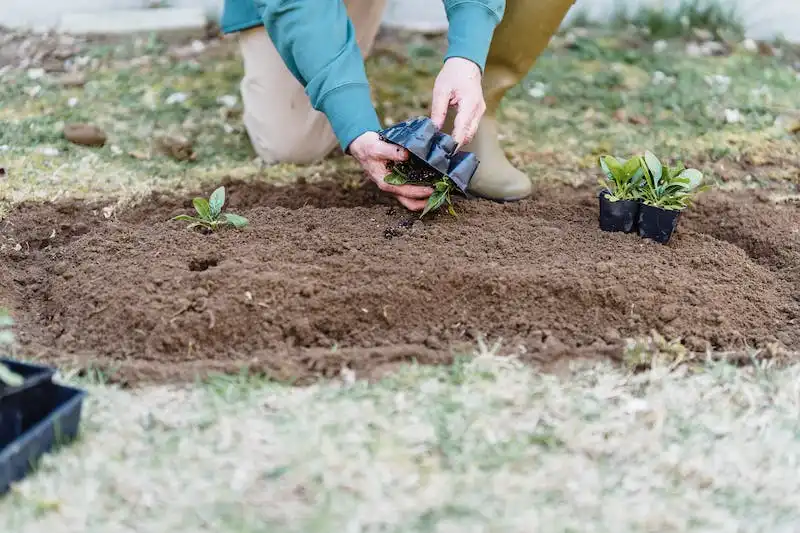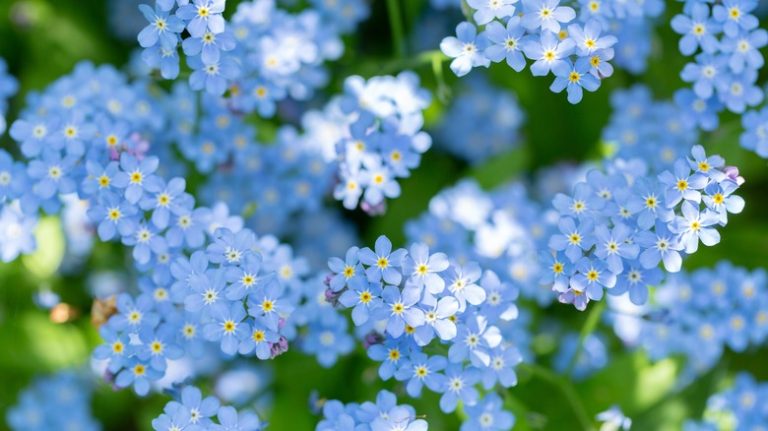When it comes to indoor plants, one favorite among gardeners is the amaryllis. This common plant is known for its large, showy blooms and is usually found in a pot or container. Amaryllis care indoors involves placing the plant in a well-lit area with indirect sunlight and providing regular waterings. Additionally, pruning the stems and bulbils can help promote healthy growth.
The amaryllis, with its USDA zones 8-11, is a bulb plant that can grow up to 2 feet in height. Its flowers come in different colors and markings, including white and red, and can bloom in the winter or spring. A popular variety of amaryllis is the festive picotee, which has yellow throats and red markings on its petals.
When buying an amaryllis, it is important to look for bulbs that are firm and free of any spots or markings. Larger bulbs tend to produce more flowers and are generally of a higher quality. Once planted, the amaryllis only needs to be watered sparingly, about once a week. It is best to water the plant when the soil is dry to the touch.
Growing an amaryllis brings a touch of color to your home, especially during the winter months. With proper care and attention, these plants can produce beautiful blooms year after year. So why not add an amaryllis to your indoor garden and enjoy its stunning blossoms?
Tips for Amaryllis Care Indoors
- Place the amaryllis in a well-lit area with indirect sunlight.
- Water the plant sparingly, about once a week, allowing the soil to dry between waterings.
- Prune the stems and bulbils to promote healthy growth.
- Choose bulbs that are firm and free of spots or markings.
- Be patient, as it may take a few weeks for the amaryllis to start growing.
- Stop watering the plant once it stops blooming and allow the foliage to die back naturally.
- In the early spring, start watering the plant again and provide it with fertilizer.
- Consider adding other types of bulbs to your indoor garden for variety and additional blooms.
- Enjoy the beauty of your amaryllis as it brings color and life to your home.
Remember, proper care and attention are key to ensuring the long-lasting health and beauty of your amaryllis plant. So follow these tips and watch as your flowers bloom brightly!
How to Care for Amaryllis Flowers Year-Round
If you’re leaving your amaryllis bulbs indoors, you’ll need to know how to properly care for them throughout the year. Amaryllis flowers are known for their bright and festive colors/varieties and can bring a burst of beauty to any space. Whether you’re buying bulbs for the first time or are an experienced amaryllis gardener, this article will guide you on how to care for your amaryllis flowers year-round.
When buying amaryllis bulbs, make sure to select bulbs that are firm and have no signs of damage or mold. Bulbs that are larger in size will typically produce more flowers. Amaryllis bulbs can be planted outdoors in USDA zones 9-11, but for year-round care, it is best to keep them indoors.
To care for your amaryllis bulbs, find a bright, well-drained spot in your home. Place the bulbs in a container with enough space for their roots to spread out. Make sure to use a potting mix that is specifically formulated for bulbs. Water the bulbs thoroughly after planting and then allow the soil to dry slightly between waterings.
For optimal growth and flowering, amaryllis bulbs should be fertilized regularly. Use a balanced fertilizer and follow the instructions on the package. During the active growth period, which is typically spring and summer, fertilize the plants about every two weeks. Once the flowers fade, reduce the fertilizer frequency to once a month. Stop fertilizing completely in the fall, as this will signal the bulbs to go into dormancy.
If you’re excited about overwintering your amaryllis bulbs to enjoy their blooms again next year, follow these steps: after the flowers have faded, remove the stalks, but leave the leaves intact. Place the bulbs in a cool, dark location for about 10-12 weeks. During this time, do not water the bulbs and allow the leaves to naturally wither. After the dormancy period, bring the bulbs back into the light and gradually start watering them again. In a few weeks, you should start to see new leaves emerge and the cycle of growth and flowering will begin again.
For support, you can use stakes or decorative supports. As the flowers grow, you may need to adjust the supports to prevent the stalks from bending or breaking. Amaryllis stalks can be quite heavy, especially when they are in full bloom with multiple flowers, so make sure the supports are sturdy.
In summary, caring for amaryllis flowers year-round involves providing them with a well-drained and brightly lit location indoors, fertilizing them regularly during the active growth period, and properly overwintering them to encourage new growth and flowering. With the right care, your amaryllis flowers will continue to bring joy and beauty to your space.
Amaryllis Care
Amaryllis is a perennial plant that is known for its beautiful flowers. In this article, we will discuss what amaryllis is, how to care for it, and the steps to growing it indoors.
Amaryllis is a type of flower that grows from a bulb. There are many different varieties of amaryllis, each with its own unique colors and patterns. One popular variety is the mosaic amaryllis, which has flowers with white streaks and splashes of color.
To care for your amaryllis plant, you will need to provide it with the right amount of water and sunlight. Amaryllis plants like to be placed in warm, sunny areas where they can receive at least six hours of direct sunlight each day. However, be careful not to expose the plant to temperatures above 75 degrees Fahrenheit, as this can cause the flowers to wilt.
Amaryllis plants should be watered sparingly. It is best to water them when the top inch of soil feels dry to the touch. Water-soluble fertilizer can be used to feed the plant during the spring and summer months. During the winter, amaryllis plants go into a dormant period and should be watered even less.
When placing your amaryllis plant outdoors, it is important to take precautions to protect it from frost. A layer of mulch can be applied to the surface of the soil to help insulate the bulbs from the cold. It is also a good idea to cover the plant with a cloth or tarp during cold winter nights.
One important step in caring for your amaryllis plant is pruning. After the blooms have faded, you should remove the flower stalks by cutting them back to the base of the plant. This will help the plant conserve energy for future blooms.
To encourage your amaryllis to bloom again, you can follow a process called forcing. This involves withholding water and placing the bulb in a cool, dark area for several weeks. After this period, you can start watering the bulb again and move it back into a warm, sunny location.
In conclusion, caring for an amaryllis plant requires attention to its water and sunlight needs, as well as proper pruning and winter precautions. By following these steps, you can enjoy the beauty of amaryllis blooms throughout the year.
Caring for Amaryllis Indoors in Spring and Summer
During the spring and summer months, the amaryllis plant requires special care to support its growth and blooming. Whether you have recently purchased a new amaryllis bulb or already have one planted, it’s important to know how to properly care for it during this time.
Amaryllis bulbs typically start blooming in late winter or early spring, bringing vibrant colors and varieties to your home. To ensure your plant continues to thrive, there are a few steps you can take.
First, make sure your amaryllis receives plenty of indirect light. A sunny spot near a window is ideal, but be careful to avoid placing it in direct sunlight, as this can lead to burning of the leaves.
Water your amaryllis regularly, but be mindful not to overwater. It is recommended to water the plant when the top inch of soil is dry to the touch. During the spring and summer months, you may need to water the plant every three to five days.
In addition to proper lighting and watering, you may need to provide support for your amaryllis stems. As the plant grows taller, it may become top-heavy and require staking. This can be done by placing a stake next to the stem and carefully tying it to provide support.
When flowering is complete, it’s important to remove any spent blooms and yellow or damaged leaves. This helps redirect the plant’s energy towards the development of new flowers.
If you wish to propagate your amaryllis plant, spring and summer are ideal times to do so. You can divide the bulbs after the plant has finished blooming, carefully separating the offsets from the main bulb and replanting them in a separate container.
During the warm months, you can also consider overwintering your amaryllis outdoors. Amaryllis prefers temperatures above 60°F (15°C), and this practice can help the plant grow stronger and bloom better in the following year. When overwintering, make sure to place the pot in a protected area and withhold water to allow the plant to go dormant.
Amaryllis is susceptible to a few diseases and pests, such as red blotch and spider mites. To prevent these issues, it’s important to maintain a clean environment and avoid overwatering. If pests or diseases do appear, there are specific treatments and sprays available to help combat them.
In conclusion, caring for your amaryllis plant during the spring and summer months involves providing proper lighting, water, and support. By following these steps, you can ensure that your amaryllis will continue to thrive year-round and show off its beautiful blooms.




